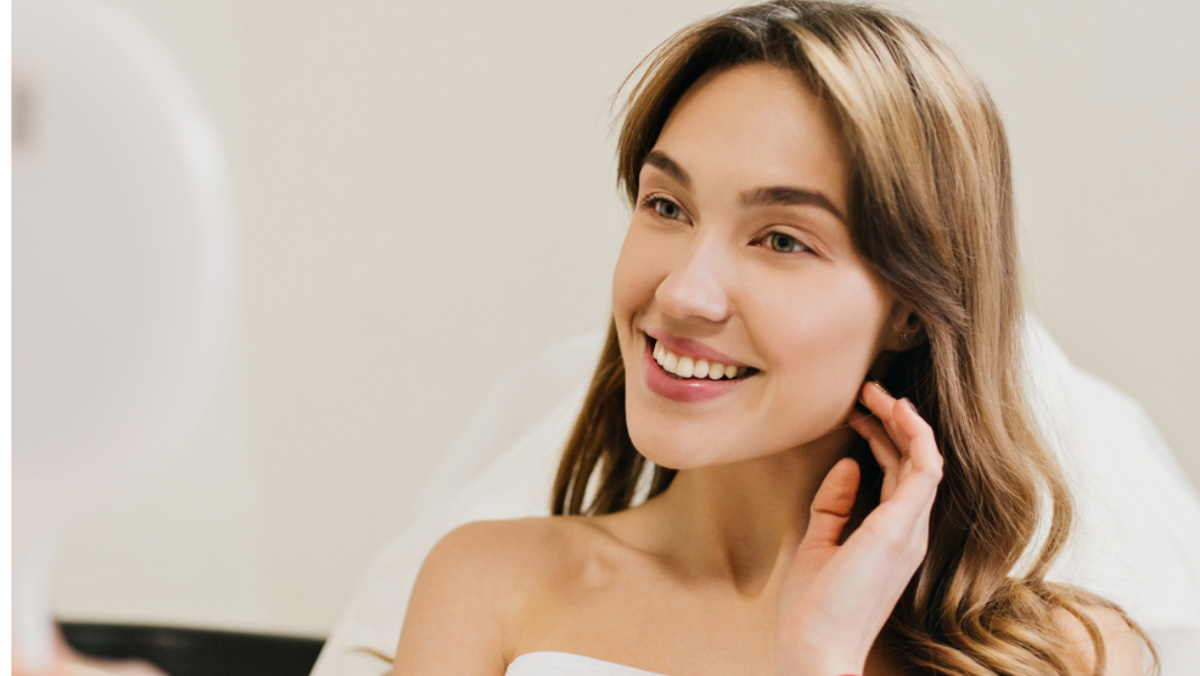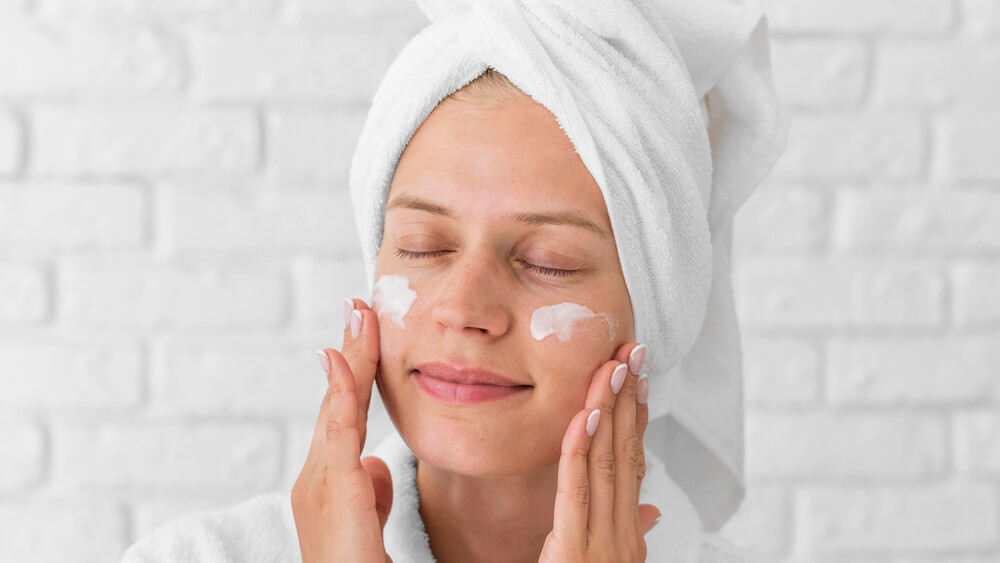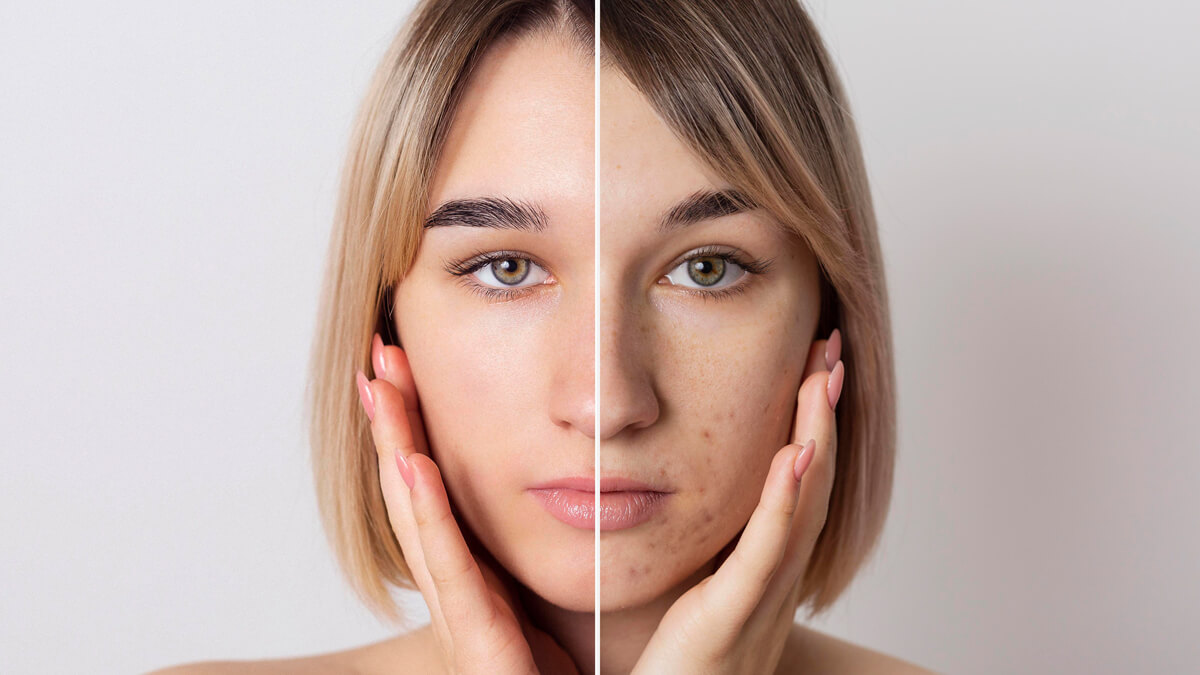This revolutionary exfoliation method, which has been a secret of Japanese women for decades, has captured the attention of “skinthusiasts” all over the world. Today we’re excited to share with you the expertise and benefits of one of the most highly sought-after skincare treatments in the industry.
According to the Collins English dictionary dermaplaning is defined as:
dermaplaning (in British English (ˈdɜːməˌpleɪnɪŋ), NOUN) : It is a cosmetic treatment, often used to treat acne scars, in which surface irregularities are surgically scraped to give the skin a smoother appearance
Word origin: from Greek derma skin + PLAN
In this post, we will provide you with a comprehensive guide to dermaplaning.
We will begin by thoroughly explaining the procedure, including the key aspects and benefits of the treatment. We will also cover the best practices, who is the ideal candidate for the treatment, and what to expect during and after the procedure. Whether you are new to dermaplaning or simply looking to learn more, this post will give you a clear understanding of the treatment and help you make an informed decision.
At Purify Skincare Clinic, we believe that everyone deserves to have beautiful, healthy skin. So, let’s dive in and discover how dermaplaning can help you achieve your best skin yet!
What is dermaplaning and how does it work?
Dermaplaning, also known as Epidermal levelling, is a gentle and non-invasive skincare treatment that uses a small, sterile, and specially designed blade to remove dead skin cells and fine facial hair (commonly referred to as “peach fuzz”).
Dermaplaning works by removing the stratum corneum, which is the outermost layer of the epidermis. This layer of the skin is made up of dead skin cells and sebum that can clog pores and cause a dull appearance.
This process can effectively remove up to two weeks of accumulated dead skin, resulting in a rejuvenated and radiant appearance that can last up to three weeks.
What are the benefits?
The goal of dermaplaning is to provide an instant resurfacing of the instantly resulting in a fresh radiant shine. Additionally, dermaplaning can also enhance the effectiveness of other skincare treatments by removing the barrier of dead skin cells, allowing products to penetrate deeper into the skin.
- Non-invasive with No Chemical Peel Downtime: Pain-free procedure, no cuts or penetration of the skin, no harsh chemicals involved, reducing chances of irritation.
- Removes Peach Fuzz: The razor blade glides across the skin, removing soft and fine vellus hair (peach fuzz) just above the surface of the skin, with no risk of the hair growing back darker or thicker.
- Rejuvenates Skin by Exfoliation: Gently scrapes against the top layer of skin, removing dead skin cells and promoting the growth of new cells.
- Evens Out Skin Tone: Removes dark patches and sunspots, resulting in a more luminous and radiant appearance.
- Baby Smooth Skin: Gives skin a brighter and healthier appearance, and a youthful glow.
- Minimises Pores, Diminishes Fine Lines and Wrinkles: Pores appear smaller and fine lines and wrinkles are less noticeable after dermaplaning.
- Helps Fight Against Acne: Removes fine hairs that trap dead skin cells, impurities, and oils in follicles and pores, which is a major cause of acne and blemishes.
- Smoother Make-Up Application: Allows makeup to go smoother and with less need for complexion products, saves money in the long run.

Who cam benefit dermaplaning?
Dermaplaning is suitable for most skin types, including those with dry, oily, or combination skin. It can benefit those individuals who have unwanted facial hair and those who desire exfoliation.
The treatment is also a great option for pregnant women or those with highly sensitive skin as it is an alternative way to lightly resurface the skin without the use of certain products or exfoliating treatments that may not be suitable for them.
It’s always best to consult with a skincare professional or a dermatologist before undergoing any skin treatments.
How much does dermaplaning cost?
The cost of a dermaplaning treatment can vary from $80 to $200, depending on the location and clinic. Some clinics may offer discounts for multiple sessions or package deals. It’s important to shop around, compare prices and inquire about the practitioner’s qualifications and experience.
It’s always best to consult with a skincare professional or a dermatologist before undergoing any skin treatments to ensure that it’s safe for you and to address any concerns you may have.
What can I expect the procedure to be like?
An average dermaplaning session can last from 30 minutes to an hour, depending on the technique used or whether you incorporate a facial etc.
During the procedure there might be some tingling, but it is uncommon, overall, it is considered a painless procedure.
Before the procedure begins your aesthetician will ask you to lay down on a chair and get in a comfortable position where they can start the first step of the procedure.
Step-by-step guide for the dermaplaning technique
- Cleanse skin with a cleanser to remove makeup or impurities.
- Apply small amount of oil or gel to make skin smooth for blade!
- Aesthetician holds blade at a 45-degree angle and gently scrapes skin in an upward motion.
- Procedure typically takes around 30 minutes and is painless for most clients.
- Small percentage may experience slight tingling or mild discomfort, numbing cream can be applied to alleviate discomfort.
Who is not suitable for dermaplaning and what are the risks?
Dermaplaning is not suitable for individuals with active acne, psoriasis, rosacea, or eczema. It is also not recommended for those who have recently undergone a chemical peel, laser resurfacing, or any other aggressive skin treatment, as the skin may be too sensitive for the procedure. Additionally, people who are taking blood thinners or who have a history of keloid scarring should avoid dermaplaning.
As for the risks, dermaplaning is considered a safe procedure when performed by a trained and licensed professional. However, there are few risks involved:
- Minor bleeding, redness, and itching.
- Infection if the tools are not properly sterilised.
- Scarring if the procedure is done too aggressively.
- Pigment changes if the procedure is done too frequently.
It’s always best to consult with a skincare professional or a dermatologist before undergoing any skin treatments to ensure that it’s safe for you and to address any concerns you may have.
Dermaplaning pre-treatment instructions
Before receiving a dermaplaning treatment it is important to note the following:
- Avoid hair removal methods such as waxing, creams, peels, and exfoliants for 7 days.
- Wait 14 days after dermal fillers/injectables before receiving treatment.
- Avoid using prescription retinol for 7 days before treatment.
- Protect your skin from sun exposure by wearing SPF daily.

PRECAUTIONS:
- Dermaplaning is not suitable for active acne, sunburn, inflamed
rosacea, eczema, dermatitis, or active cold sores.
- It is not suitable for immune compromised or uncontrolled
diabetes.
- It is not suitable if you have used Roaccutane within 12 months.
- It is not suitable while on prescription blood thinning
medication.
Dermaplaning post-treatment instructions
- Use a gentle cleanser and apply serums and moisturiser as prescribed by our specialists.
- Wear SPF 30 or greater daily.
- Avoid sun exposure for 7-10 days after treatment. If you must be in the sun, wear a wide brimmed hat and apply SPF 30 or greater.
- Avoid excessive heat and chlorine for 24 hours after treatment.
- Avoid facial waxing for 7 days.
- Do not pick, scratch, or rub the treated area.
- Do not use scrubs, polishers, exfoliants, or cleansing brushes for 7-14 days.
- Do not use products containing AHA’s/BHA’s or retinol for 5-7 days after treatment.
- Use recommended hydrating serums and moisturisers as advised by your skin therapist to replenish skin hydration.
